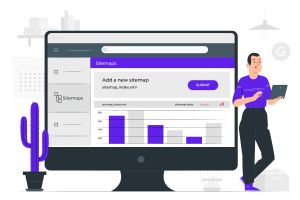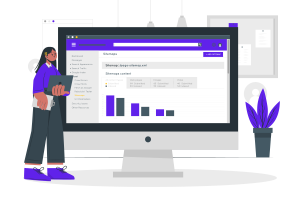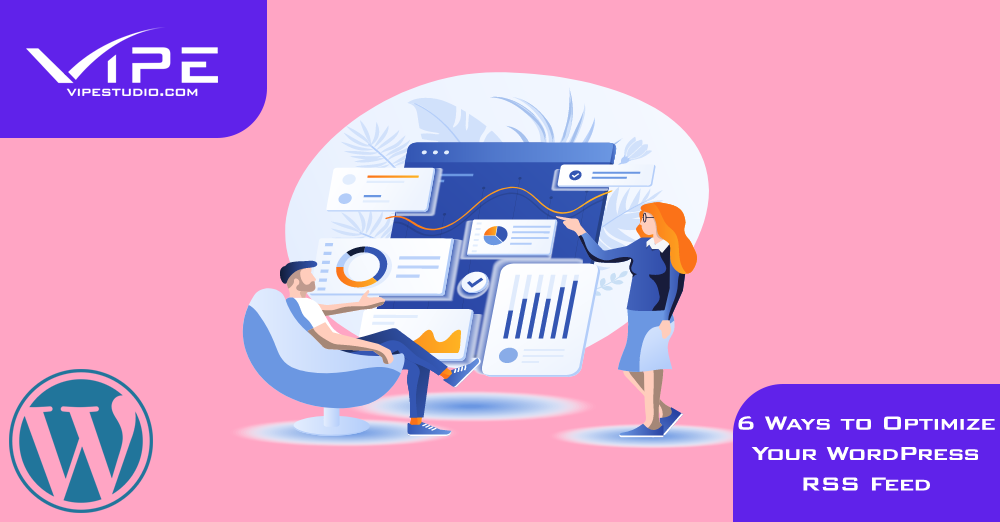24.01.2022
WordPress Development
6 Ways to Optimize Your WordPress RSS Feed
READING TIME: MIN
Table of Content
Every website has an RSS feed as a default setting. Many of our clients from our WordPress agency for development are interested in learning about how to optimize this feed for protecting their content, sending more traffic to their websites, and doing many other things for their websites.
In this article, our experts from our WordPress development agency will show you some useful tips on how you can optimize and customize your RSS feeds properly. These tips are proven to be very effective in boosting the performance of your website. By optimizing your RSS feed, you can get more backlinks, send more traffic to your website, and also prevent content scraping.

1. Create a good RSS feed sitemap
This is the first thing that you are going to do when you are planning to optimize your RSS feed. This RSS sitemap will be different from the XML sitemap. This RSS sitemap will have the most recent content from your website. Based on our experience at our WordPress agency for development, we are happy when using the All in One SEO plugin. This plugin will add the RSS sitemap to your WordPress website automatically without having to learn about the coding.
2. Show an excerpt on the RSS feed instead of the full article
This is another important tip from our WordPress development agency. When your readers can see the full article from your RSS feed, they will be able to read your article from their feed reader. It will affect the overall page views, conversion rates, and also advertising revenues on your website. You can visit the WordPress admin dashboard and go to the Reading section on the setting menu. Then, click the Excerpt button on the feed. Don’t forget to click ‘Save Changes’ button to update your RSS feed.

3. Allow all users to subscribe to categories in the RSS Feed
Many of our clients from our WordPress agency for development are happy when using this tip. Every category on the WordPress website will have its RSS feed. If you are running a blog with a lot of categories, you can let your readers subscribe to any categories that they love. You can make it easy for your readers by highlighting this ability on your website. Your readers will be able to follow any of their favorite categories from your WordPress website easily and quickly. It will increase the overall conversion rate on your website.

4. Add Social Buttons to your WordPress RSS Feeds
If you are asking our WordPress development agency, we will be willing to recommend this tip to you. Most RSS feed readers do not have any social sharing feature. However, you can still add your own social media icons to your RSS feed. It will help you encourage sharing among your readers. You can add the social sharing buttons for any social media accounts that you want, for example, Twitter or Facebook. The more people are sharing your RSS feed and your website, the better the result you will get.
5. Allow users to subscribe to your RSS feed via their email
Based on our experience at our WordPress agency for development, this is another useful tip that we can offer to our clients. Many people are interested in subscribing to your RSS feeds on their email. It will be easier for them to follow your blog when they subscribe to your RSS feed via their email. If you want to follow this tip, you can consider using a good email marketing service, such as SendinBlue. This service has a free plan that allows you to send up to 300 emails to your clients every day.

6. Protect your RSS feed from the other content scrappers
This is another tip that is very useful for all of our clients from our WordPress agency for development. Content scraping is usually done when the content is taken from your website. In most cases, this practice can be done via your RSS feed. Your content will be republished on the other websites as their own. You can customize your RSS feed, so you can protect your RSS feed from content scrappers. You can contact our WordPress development agency for learning about how you can prevent content scrappers from stealing your content.
More on The Topic
- Ecommerce Plugins Eating Time and Sanity
- Content Migration as a WordPress Bottleneck
- Headless WordPress and Headless Communication
- Staging Sites That Reveal Organizational Blind Spots
- WordPress Performance Debt Nobody Talks About
Tags: categoriescontentcontent scrapingcustomizationemailoptimizationrssrss feedsitemapsubscription
The content of this website is copyrighted and protected by Creative Commons 4.0.



